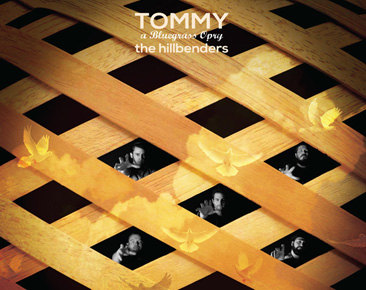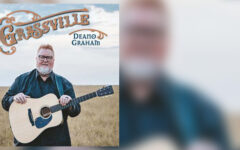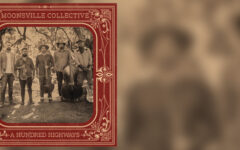
 Do you have to be a fan of the original rock opera, Tommy, to enjoy The Hillbenders’ bluegrass tribute? After having a good listen to Tommy: A Bluegrass Opry, I’d say, “no,” but it helps.
Do you have to be a fan of the original rock opera, Tommy, to enjoy The Hillbenders’ bluegrass tribute? After having a good listen to Tommy: A Bluegrass Opry, I’d say, “no,” but it helps.
For anyone over 50 years old, the original was an inevitable, ubiquitous part of your youth. If you had any connection to pop music, that is. There was the hit album from The Who in 1969, their live tour over the next two years, the blockbuster film and soundtrack in ’75, and the broadway show in ’92. Tommy was a top 5 album in both the US and Britain, and 3 different tracks cracked the top 20.
It was a legitimate sensation. The story of the deaf, dumb, and blind boy who played a mean pinball entered the cultural consciousness of the age, along with its references to child abuse, hero worship, and exploitation.
So why in 2015 is there a bluegrass retelling? The idea originated not with The Hillbenders, but with music impresario Louis Meyers, a banjo player himself, and one of the founders of the massive SXSW event held in Austin, TX each year. After stewing on the concept for many years, it came to Meyers that these were the right guys to bring his vision to life, and when he approached the band they jumped at the chance.
Meyers served as the new album’s producer, and arranged for its release on a private label licensed through Compass Records. He found The Hillbenders perfect for recreating the Who’s epic because of their two distinct lead vocalists (Jim Rea and Nolan Lawrence), both of whose voices come from outside the rural/mountain tradition, which Meyers saw as an appropriate parallel to the shared vocals of Roger Daltry and Pete Townsend on the original. Rea also has the sort of theatrical background required to sell some of the more outlandish material.
So how did they do? As a tribute to Tommy, it excels and even soars on ocassion. Meyers was dead right in imagining the rock opera as appropriate for a bluegrass version, and in his confidence in the Hillbenders to pull it off successfully. Rea and Lawrence do a fine job with the vocals, even evoking the passion and sincerity of Daltry and Townsend.
But is it bluegrass? That is a tougher question. It certainly is an accurate and authentic representation of the original using bluegrass instruments, with a slide reso-guitar in place of a fiddle. Where The Who would rock out, the ‘Benders go into a 2-beat grassy vibe, but overall they retain the classic rhythms, signatures, and vamps from the ’69 recording.
How would it sound to a bluegrass fan unfamiliar with the archetype? Since I grew up with Tommy, I can only surmise. Some things, like the background vocals in Christmas and the overall theme of Fiddle About, would seem quite odd and out of character for contemporary grass. Others, like Acid Queen, fit well with a hony-tonk, Heavy Traffic Ahead feel, mixed with bluegrass. The waltz beat of Welcome will also be familiar, and the final track, We’re Not Gonna Take It/See Me, Feel Me, is played with a pure bluegrass arrangement.
Perhaps because of its overwhelming popularity, Pinball Wizard may be one that everyone will like. The rolling banjo in the intro and signature is perfect, and the vocals are spot on. I’ll never be able to hear this song again without expecting the ol’ five. Mark Cassidy’s playing is just right throughout, and adds the bluegrass flavor where it suits.
There’s no escaping the fact that the story and narrative of Tommy is an ugly and unpleasant one, and not the sort of tale that bluegrass fans will be accustomed to following. That says nothing about the brilliance of the adaptation and performance of The Hillbenders here. Jim Rea in particular deserves kudos for his singing. I can’t imagine this working absent a searing rock-style vocal. He is also credited with arranging the material for a string band.
Well done, ‘Benders!
So, in the end, do you need to be a fan of Tommy to enjoy Tommy: A Bluegrass Opry? No, but it helps.







